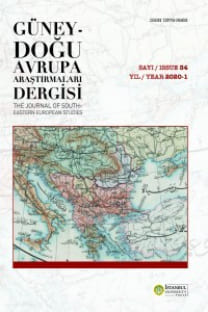Ioannes Kaminiates'e Göre Müslüman Arapların Selânik’i Kuşatması ve Zaptı (904)
Selânik, Trabluslu Leo, Ioannes (John) Kaminiates, Gemiler, Ganîmet, Seyrüsefer
The Siege and Capture of Thessaloniki by Muslim Arabs (904) According to Ioannes Kaminiates
Thessaloniki, Leo of Tripoli, Ioannes (John) Kaminiates, Ships, Loot, Navigation,
___
Belke, K., Tabula Imperii Byzantini 13, Bithynien und Hellespont, Wien 2020.Christides, V., “The raids of the Moslems of Crete in the Aegean Sea: Piracy and Conquest (800-961) A. D.”, Byzantion 51, 1981, s. 76-111.
- ISSN: 0378-3863
- Başlangıç: 1974
- Yayıncı: İstanbul Üniversitesi
Selânik Haçlı Krallığı’nın Kuruluşu (1204)
Sultan II. İzzeddin Keykâvus Döneminde Sarı Saltuk’un Balkanlara Geçişine Dâir Mütâlaalar
Ioannes Kaminiates'e Göre Müslüman Arapların Selânik’i Kuşatması ve Zaptı (904)
Sicilya Kralı II. Roger’nin Bizans’a Taarruzu ve Bizans-Norman Savaşları (1147-1149)
Osmanlı İlerleyişi Esnasında Trakya Şehirlerinin Durumu Hakkında Bir Değerlendirme
Sicilya Normanlarının Son Feri, 1185 Selânik Saldırısı
Ioannes Kaminiates'e Göre Müslüman Arapların Selânik’i Kuşatması ve Zaptı (904)
MS 6.-9. Yüzyıllarda Bizans ve Avarlar: Siyasi, Diplomatik ve Kültürel İlişkiler
Müşterek Bir Hücum: Slav ve Avarların Selânik Kentine Saldırıları (617/618)
